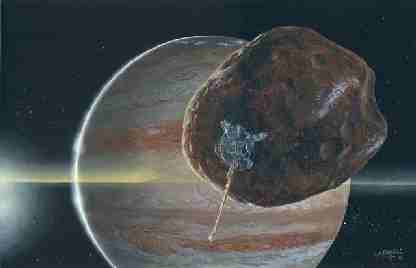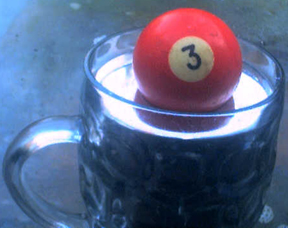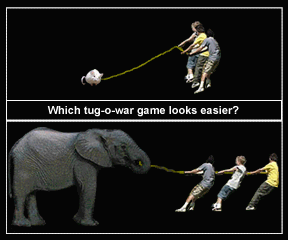Click on image for full size
Courtesy of NASA
A Jupiter moon that has more holes than Swiss cheese!
News story originally written on December 11, 2002
Amalthea , a small moon of Jupiter, is not made of Swiss cheese, but it does seem to be full of holes making its density surprisingly low.
Roughly the shape of a potato, Amalthea is a small, reddish moon that is about 270 km (168 miles) in length and about half as wide. We know very little about the composition of most small moons, but now the Galileo spacecraft has provided us with some interesting information about what makes up Amalthea.
To figure out the density of Amalthea, scientists needed to know the mass and the volume of the moon (because, as you may know, density=mass/volume). They calculated the mass of Amalthea from its gravitational affect on the Galileo spacecraft, which passed 160 km (99 miles) from the moon. The volume of the moon was calculated from images like the one on the left.
They found that Amalthea has very low density. Scientists at the NASA Jet Propulsion Laboratory suggest that the rock that makes up Amalthea is broken into many pieces that are about the size of large boulders. The pieces are just barely touching each other leaving many empty gaps in the moon. ďThis finding supports the ideas that the inner moons of Jupiter have undergone intense bombardment and breakup. Amalthea may have formed originally as one piece, but then was busted to bits by collisions,Ē said Dr. Torrance Johnson, project scientist for Galileo.
However, the new findings about Amalthea do not fit with all the pervious theories about Jupiterís moons. One of these theories describes the formation of Jupiterís moons suggesting that moons closer to the planet, like Amalthea, would be made up of denser material than those farther out. Jupiterís four largest moons fit this model, however, Amalthea's rocky material could not be denser than the rocks that make up the neighboring moon Io.















